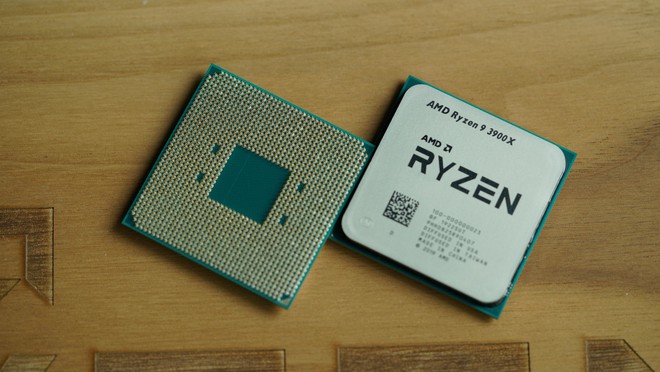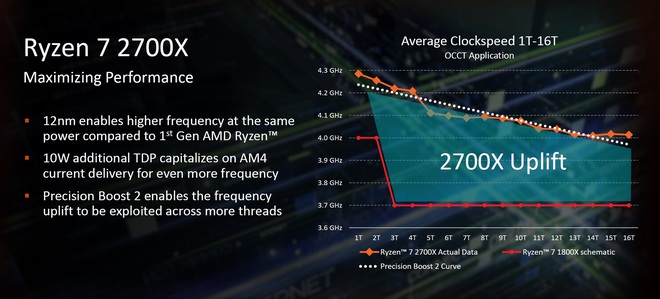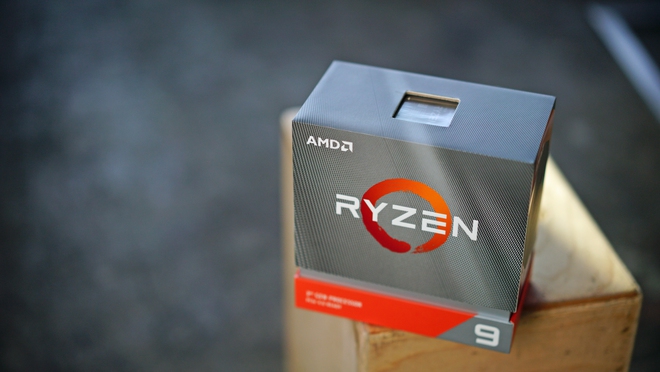AMD Rise: How does Ryzen CPUs gradually take over Intel’s throne?
- Tram Ho

November 25 last year was considered a historic milestone, marking a new era for the computer CPU market. Launched at the same time, targeting the segment of high-end individual users, but Threadripper 3970X “terrorist” CPU, AMD’s leaderboard has completely surpassed its peer competitor from Intel, Core i9-10980XE. This is not particularly surprising when looking at the superior multiplier, 32 compared to 18, almost double. This horrible performance disparity is like a deadly shot and a solid affirmation of AMD’s strong return to the CPU market. This fact has gradually faded since the first Ryzen generation was born three years ago but is now considered to be obvious.
For the first time after the Intel Core microarchitecture era ended Athlon 64, AMD CPUs really took control of the desktop CPU market. In 15 years of struggling, including a bit of trying with Bulldozer, AMD was almost incapable of competing with Intel on the desktop and laptop fronts. Overcoming the rush, the Ryzen 4000 CPU series for laptops introduced in late March continues to ring the alarm for Intel with outstanding performance and eliminate the prejudice “AMD is hot and power consuming” .
AMD’s success has been an important contribution of designing multiple silicon substrates on a single processor instead of a single sole like Intel. As a result, it is easier to cram more cores on a microprocessor at a much cheaper price than Intel.

For a while, it was thought that designing a silicon base on an Intel CPU was the pinnacle. Falling asleep on the 10-year victory thanks to its near-unique position in the market, the only thing Intel improved on their Core CPU line was the single-core performance but the multi-core performance. From 2008 to 2017, the blue team’s highest-end Core i7 CPU also had only 4 cores and 8 threads. It was not until 2016, when rumors of Ryzen surfaced, that Intel introduced the Broadwell-E CPU family with the most advanced CPU, the i7-6950X carrying 10 cores. However, its price is not pleasant at all, at 1723 USD, nearly 5 times higher than an i7-6700K CPU at the time and 700 USD more expensive than the i7-6900K with 8 cores.
Down until March 2017, while an Intel 8-core CPU was priced at $ 1089, AMD released the first Ryzen generation, flooding the market with cores and cores. An AMD Ryzen 7 1800X with 8 cores, 16 threads, the most advanced AMD priced only 499 USD. Even users can choose a more economical version is Ryzen 7 1700 for only 330 USD and still get 8 cores and 16 threads. Thus, for the first time in 10 years, Intel has started increasing the multiplier on its popular CPU, starting from Kaby Lake 8xxx.
Of course, everything has its price. AMD’s first-generation Zen microarchitecture could not be perfect. The first generation Ryzen, 1xxx despite being able to deliver superior multi-core performance thanks to the doubled multiplier, Ryzen 1xxx’s IPC and IPC lost quite a distance compared to the opponent on the other front. Therefore, the applications that require single-core performance when running on Ryzen are completely inferior to the 7th generation Intel Core i.

Knowing we know ourselves, AMD continues to work hard to improve outstanding issues with the Zen + microarchitecture. The second generation of Ryzen launched with the Ryzen 7 2700X is the flagship CPU priced at only $ 330 but still has up to 8 cores 16 threads. The overall performance of this CPU series is also significantly improved with higher clock speeds and lower cache delays. Of course, the gaming performance or single-core Ryzen 2xxx is still inferior to Intel but the gap has narrowed a lot.
The rise of AMD is at the same time that Intel is starting to show how hard it is to bring improvements to its mainstream CPUs. While AMD continues to shrink its transistor size to 12nm with Ryzen 2xxx and then to 7nm with Ryzen 3xxx, Intel is still sticking to its 14nm process since 2015. Just every year they add a + sign behind 14nm. Even the generation of Comet Lake CPUs that are rumored to launch later this month continues to carry 14nm transistors.
At the same time, a series of security vulnerabilities like Specter and Meltdown led Intel to release software updates to curb the power of its CPUs. Even Core 9 Gen i also cut off hyper-threading hyper-threading on the i5 and i7 CPU series. At the same time, it is Intel’s factories that also struggle to achieve sufficient production with market demand.

At the end of the third quarter of 2019, AMD fired another shot. While Intel is stopping at 14nm ++++, AMD has taken another step further with Ryzen 3xxx series manufactured on 7nm process, bringing in a completely new Zen 2 microarchitecture, markedly improving computing performance, IPC and pulse. It is also the first CPU series in the world to support the PCIe 4.0 protocol. Thanks to improvements in microarchitecture and design, for the first time, mainstream CPUs hit the 16-core threshold on the Ryzen 9 3950X, more than double the direct rival Core i9-9900K. All performance gaps are almost blurred, especially when new applications or games are developed to make good use of the overwhelming number of cores that Ryzen CPUs bring. Now there’s little reason to buy Intel Core i9 instead of Ryzen 9 3xxx, even if the i9-9900KS still holds the top spot in terms of clock speed, up to 5GHz.

The Ryzen 9 3900X plays an important role, changing the market the way AMD K7 Athlon was the first CPU to hit the 1GHz threshold or Athlon 64 as the 64-bit computing boss. On some tests, the Ryzen 9 3950X with only 16 cores costing $ 500 even beat Intel’s $ 979 Core i9-10980XE CPU. Needless to say, everyone knows how well Threadripper 3970X and 3990X with AMD’s 32 and 64 cores, respectively, outperform their rivals from Intel.
At this point, Ryzen is the optimal choice for every PC, unless you need Intel Quick Sync to support certain video editing applications, use Adobe tools like Photoshop, need to play games. with extremely high FPS numbers or need to handle deep learning-related tasks or AVX-512 instruction set. Before 2019, you will need a reason to choose Ryzen now, you will need a reason to choose Intel.
No matter how AMD rises, we should not underestimate Intel. Intel’s desktop market share of CPUs is still large. CPU market share for laptops still belongs to Intel although Ryzen 4000 has just launched. Remember, when Intel last encountered this difficult situation, it released Conroe and Core microarchitecture to dominate the CPU market for 15 years. Not all of a sudden, Intel is still called a giant in the chip village. Until then, AMD and Ryzen still deserve to be praised for what they’ve done over the past 3 years. Without the red team, most desktop users may continue to pay $ 4-500 for an 8-core quad-core CPU.
Source : Genk
